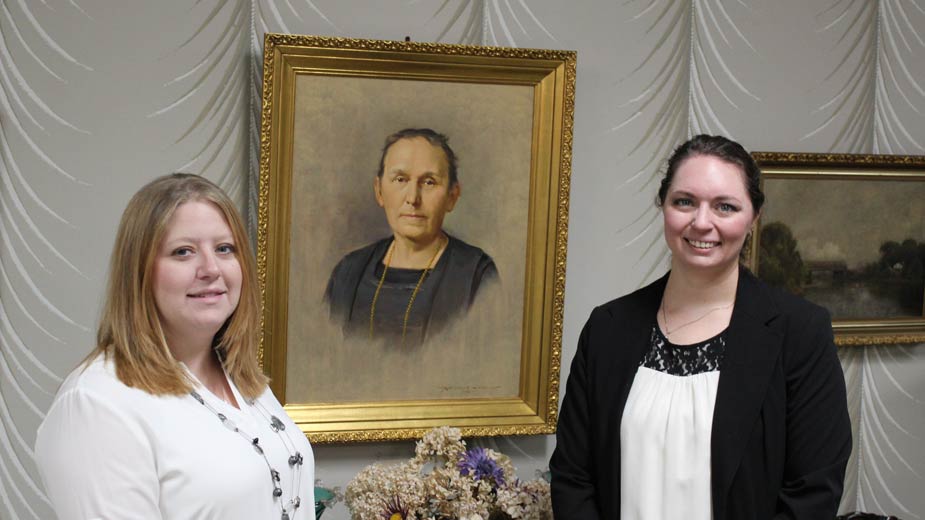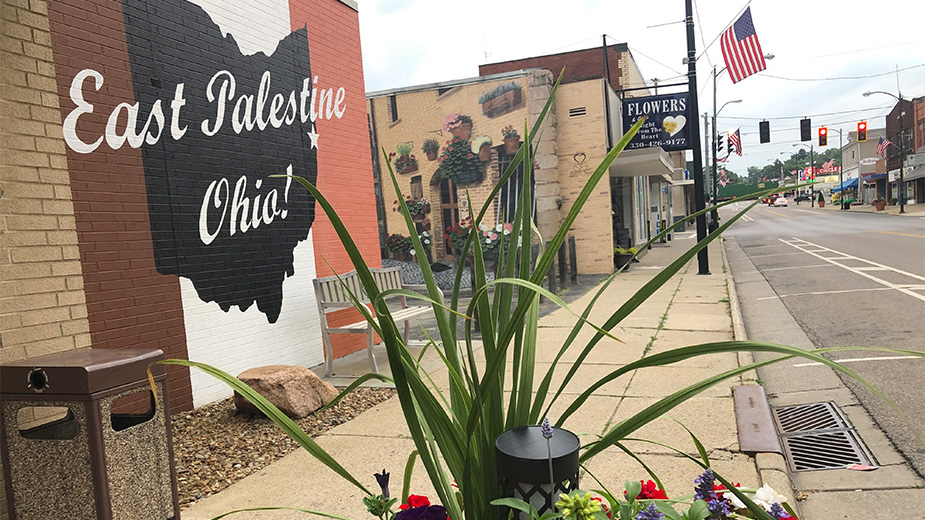Discover Fascinating History Off the Beaten Path
YOUNGSTOWN, Ohio — One of the best ways to learn history, says William Philson, is to take the road less traveled.
Places like the Tyler History Center and the Youngstown Historical Center of Industry and Labor provide a wealth of information, he says.
But by going off the well-worn paths and venturing away from the some of the better-known institutions, you can delve deeper into the minutiae of everyday life and what makes each town unique.
“Don’t look down on the little places,” says Philson, executive director of Mercer County Historical Society. “These little places have their stories to tell. You come here to hear the story of the Civil War, of the poor house, of the day-to-day life of people in Mercer County.”
The society operates several small museums throughout the county, including the Rural Life Museum on the outskirts of Mercer, the Raisch Log Cabin in Sharpsville and at its headquarters in downtown Mercer, the Anderson House.
Among the exhibits at the latter are displays on Mercer County’s role in the Civil War, the area’s volunteer fire department, American Indians and John Goodsell, the Mercer native who accompanied Robert Peary on the first successful expedition to the North Pole in 1909.
“You don’t want to forget about these people,” Philson continues. “Where else can you see someone who was within 100 miles of the North Pole? Where can you see how someone’s kitchen was 100 years ago? All of these places are important and tell the story of us.”
For those who run them, the small museums in the region exist to tell stories, whether it’s of a man who left Mercer to make it to within 60 miles of the North Pole (as a review of Peary’s diaries later showed) or of the people who walked in and out of the largest steel mills in the Mahoning Valley.
“Not only do we collect the steel industry equipment, but much of what we have was built in the Mahoning Valley, so we’re showcasing the manufacturing ability of the whole Valley,” says Rick Rowlands, director of the Youngstown Steel Heritage Foundation.
The steel heritage museum, 2261 Hubbard Road, Youngstown, features a steam engine used to power a steel roller at Youngstown Sheet & Tube Co.’s Brier Hill Works and an overhead electric crane built in Alliance in the late 1800s.
Also featured are locomotives used to haul raw materials in and then carry products out of the mills.

Part of why Rowlands started the foundation was to preserve not just the stories of those who worked in the steel mills, as do the area’s better-known archives, but to preserve the machinery they employed.
“You can read that this stuff was big and heavy,” Rowlands says, “but until you see it in person, you don’t know just how big and heavy. … I can show people how it was built, tell them the history and they can get a better understanding of their own history.”
In some cases, these museums off the beaten path tie into larger pieces of history. For instance, the Sutliff Museum, established in 1971 on the second floor of the Warren-Trumbull County Public Library’s main branch, shows items that belonged to one family involved in the Underground Railroad.
Among the items on display is a hobble, a piece of metal attached around a slave’s ankles to prevent him from running. Levi Sutliff had removed one from a runaway slave in Cincinnati after the slave escaped from Loudon County, Va.
“It shows that a small family really can have an effect on history, even if it’s a small part of that history,” says museum director Melissa Karman.
Adds curator Aimee Wehmeyer, “It gives people a way to not only see the past, but explore it. And it’s in their own backyard. If they go to other cities, it may not be the same atmosphere or circumstances.”
Local expertise also plays an important role in setting these museums apart. Rowlands had family who worked in steel mills and used equipment similar to what’s on display in the Steel Heritage Foundation museum.
Being based near downtown Warren, Karman can point out to visitors the houses believed to be stops along the Underground Railroad.
At the Museum of Ceramics in downtown East Liverpool, director Sarah Webster Vodrey is a descendant of Jabez Vodrey, an Englishman who established a pottery in the city in the mid-1800s.
“We have a tour guide who’s a fourth-generation descendant of a pottery founder and another who worked in a pottery long enough to learn that it’s hard work,” the director says with a laugh. “There’s value in looking back at ourselves. It doesn’t mean eras past were the good ol’ days … but there’s a lot we can appreciate and learn from.”
In addition to serving as another outlet to educate people on the contents of the museum and the stories behind them, outreach programs act as another way to draw visitors.
The Sutliff Museum is small, just one room in the library, and has limited hours – 2 to 4 p.m. Wednesday through Saturday – but the two part-time staff, along with help from Friends of the Sutliff Museum, organize lectures and tours through Warren.
At the Rural Life Museum, the Mercer County Historical Society served about 60 meals as part of its Farm Day.
At the one-room schoolhouse, a “class reunion” drew 70 visitors, “and it wasn’t just older people,” Philson says. “There were a lot of younger kids who had never been inside a one-room school.”
To attract children, the ceramics museum in East Liverpool offers day camps for children throughout the summer. There they can make clay pots, which are sent to be fired across the Ohio River at the Homer Laughlin China Co. Once the pieces are finished in the kilns, they’re sent back for the campers to glaze.
At the Steel Heritage Foundation, Rowlands hosts open houses and occasionally gives lectures on the history of steel in the Mahoning Valley.
“We’ve all been given a lot and we want to make sure we’re good stewards and provide the history,” says the ceramics museum’s Webster Vodrey.
And, all four agree, it’s fun to check out places that are rarely front-and-center when local history is discussed.
“There are places everywhere, not just in Mercer County,” Philson says, “that maybe don’t have the budget to advertise, but they all tell a story. And it’s their story of the human experience.”
Pictured: The only staff at Warren’s Sutliff Museum are curator Aimee Wehmeyer and director Melissa Karman, who maintain the collection donated by Phebe T. Sutliff, whose portrait hangs at the museum.
Copyright 2024 The Business Journal, Youngstown, Ohio.



